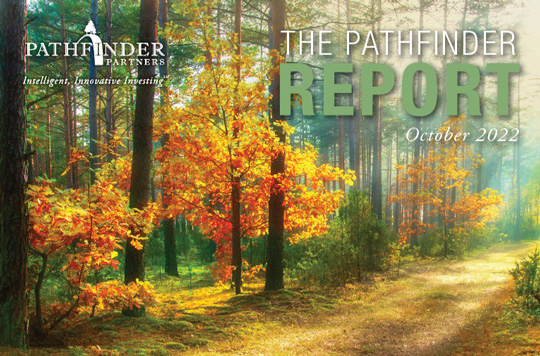Point: Counter-Point
GUEST FEATURE:
The Death of Office Space?
By Scot Eisendrath, Managing Director

What is the future of office space? Is hybrid work here to stay? Will we ever see the type of office space utilization rates that we had prior to the Covid-19 pandemic? These questions are difficult to answer, but a look at my personal situation could provide some insight.
I started my professional career in San Diego in the early ’90s. I joined CBRE, the large real estate services firm, as an analyst in their Financial Consulting Group. The office was a second home to me. Not only during regular business hours, but sadly during evenings and weekends as well. I am dating myself a bit, but this was before laptops were commonplace; if I remember correctly, I got my first laptop a year into the job.
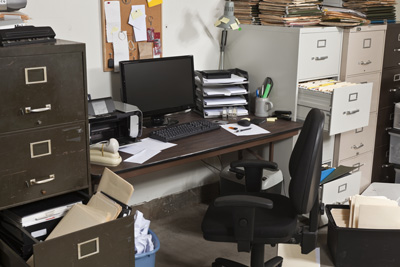
The office was where my files were located, not just computer files, but physical files with all the info I needed to do my job. At this time, computer programs could not be remotely accessed, so I also needed to be in the office to utilize the tools that were required to do my work. More importantly though, the office was where I learned from my experienced senior co-workers. I learned from their example how to conduct myself in meetings and on conference calls, and how to interact with colleagues, clients, and other professionals. One of the most significant factors that I attribute to my professional success is the time I got to spend with co-workers who ultimately became mentors to me, and many times those interactions came from impromptu meetings, conference calls and client visits that were I not in the office, may have never happened.
Fast forward to today. I believe that hybrid work has changed my life for the better. I have found that 6:30 to 8:30 in the morning are two of my most efficient hours for work – especially if you are not spending them getting ready for the workday and commuting. With the extra time I have throughout the day, I am doing more physical exercise and have taken on additional hobbies, which have dramatically improved my work/life balance. I don’t necessarily need an office to efficiently do my job anymore, as my files and programs are in the “cloud” and readily available wherever I am physically located, and with the advent of Zoom® and other means of communication, I feel connected to my co-workers, and believe we still have the same types of synergies we had when all together in the office each day.
In my informal poll of friends and colleagues, I do not really know anyone who goes into an office five days a week anymore or is planning to do so in the future. Of course, I am in a different stage of my career, and I do get concerned about the professional development of young professionals just getting started. But one thing that I’ve learned is that young people adapt to thrive in a changing environment, and I don’t believe this time will be any different. And, in my discussions with young professionals, they seem to be the most vocal that hybrid work is here to stay.
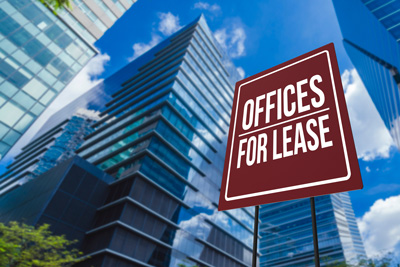
The office vacancy rate is at 19% according to brokerage firm JLL, higher than during the Great Financial Crisis of 2008 – and that vacancy rate is likely heading higher. If recent headlines in the Wall Street Journal are any indication, we are not going back to the way things used to be.
KPMG, the global accounting firm, is downsizing their U.S. headquarters in Manhattan from 800,000 to 456,000 square feet, a massive reduction in space, showing that they believe hybrid and remote work are here to stay. Lyft Inc., the ridesharing app, is making a similar move by subleasing 45% of the 615,000 square feet they currently occupy. This after telling their more than 4,000 office employees in March that they could work remotely indefinitely. And large financial institutions, like pension funds, are selling office buildings as a changing work environment raises the prospect of lower demand for many downtown offices.
And when employers try to mandate a back to the office routine, employees often revolt, as seen by a recent petition of Apple Inc. employees after being told they would need to be in the office at least three days a week (this after a similar revolt earlier in the year at Apple). These are just three examples of companies dealing with hybrid work and office space during a quiet week in late summer. There are countless stories of other companies facing the same issues.
Selected headlines in the Wall Street Journal, August 2022:
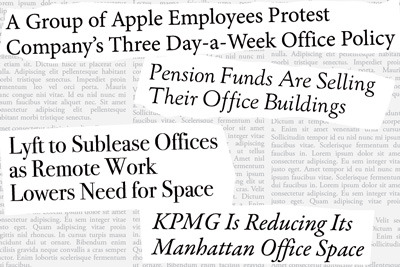
While I do not believe that we are witnessing the death of office space, the pandemic has certainly turbocharged an evolution that had begun years ago, sparked by moves for greater work/life balance, remote work, cloud computing and other factors. It will be interesting to see how the chips fall, but my bet is that hybrid work is here to stay, we will never utilize office space like we did prior to the pandemic and office space as we previously knew it is forever changed.
Scot Eisendrath is Managing Director of Pathfinder Partners. He is actively involved with the firm’s financial analysis and underwriting and has spent more than 20 years in the commercial real estate industry with leading firms. He can be reached at seisendrath@pathfinderfunds.com.
GUEST FEATURE:
The Future of Office
By John Frager

Let’s not be dramatic. While the COVID-19 pandemic has prompted trepidation and delayed decision making, the need for office space is not going away. Industry professionals have argued that Work-from-Anywhere could decrease overall demand by up to 10-20%, but most companies believe the need to redesign office space will increase demand by an almost equal amount. Long term, there is one basic fact: the number of office workers in the U.S. will continue to grow, along with the population. The decreased demand for office employees because of current Work-from-Anywhere changes will be a small dip when we look back, just as in past recessions.
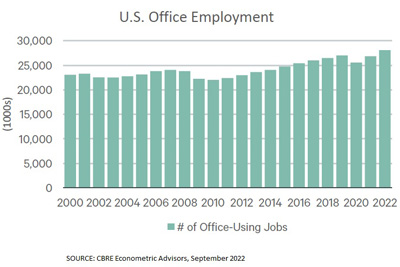
For most organizations, the office represents a fundamental tool. Studies have concluded that being in the office facilitates interaction, sparks innovation, and in turn, the potential for new, disruptive ideas. Hybrid and 100% remote work have proven to be successful for veteran employees in defined roles with trusted colleagues, but for certain people and objectives, work that is entirely remote presents problems that can only be solved in the office. For example, studies have also shown that an in-office presence promotes the successful onboarding of new workers, provides opportunities for mentoring, as well as the building of new teams.
To be sure, hybrid work appears to be fully entrenched in American life. White-collar workers have enjoyed the demise of the daily commute, leaving them with more time to spend with family or for hobbies, and some people have relocated to the suburbs and small towns, where there is often more space along with the perception of a better quality of life, including reduced homelessness and less crime. Still, many office workers understand the value of the office for not just collaboration, but a sense of community, and prefer to work from the office at least two days a week.

To ensure that employees come to the office at least occasionally, employers must rethink what their offices can deliver that is unique compared to the experience of working remotely. Traditionally, the office sector has been the slowest to change among commercial property types, due to the costly interior improvements that typically lead to longer lease terms. But the pandemic and rapid adoption of technologies such as Slack and Zoom became the ‘great accelerant of change’, and now companies are placing more creative thought than ever before into how people work and how best to design spaces.
One of the challenges is ‘one-size-fits-all’ never really applied to office space, and it certainly doesn’t today. Companies differ in the types and number of employees, the work they do, the average age of their employees, and their location. As such, landlords need to reinvest and reimagine what future office spaces will look like through the lens of redesign and its own unique value proposition. This can be thought about not as a flight to quality, but a flight to experience, which includes bigger common areas for superior interaction and collaboration, along with the ability to provide convenient services and prioritize employee wellbeing.
Long-term portfolio planning remains top of mind for companies, but with hybrid work in its infancy and many employees continuing to work 100% remote, occupiers have exercised caution. According to CBRE Econometric Advisors, U.S. demand over the past four quarters was 58% below the 2017-19 average. However, more companies are making long-term commitments to their offices. Large tech companies increased their footprint over the past two years by approximately 20%, including in San Diego, where Fortune 50 tech companies leased over 3 million square feet.
Recent survey results indicate that not all occupier decisions are being driven by cost reduction or a desire to shrink their overall footprint. In fact, unless a company is willing to go ‘free address’ with no assigned seating, the amount of square footage leased cannot be reduced, as a portion of the hybrid workers may come into the office on any given day.
Many people believe the demand for office space will dramatically drop. However, it was similarly argued that e-commerce and digitization would supplant retail space, but brick and mortar did not disappear. And like retail, office is finding its new value proposition, with landlords and occupiers alike studying how working from home and in-the office will assimilate in the future. That’s where the magic of satisfying employee desires along with employer needs for productivity and a positive culture will be a win-win situation.
John Frager is Executive Managing Director of CBRE, the global leader in commercial real estate and investments. He is also Chairman of Pathfinder Partners’ Advisory Council.
Share this Article
IN THIS ISSUE
PATHFINDER PARTNERS INCOME FUND, L.P.
A Stablized Multifamily Fund
CHARTING THE COURSE
Dazed and Confused
FINDING YOUR PATH
A Bumpy Ride Ahead for Housing
POINT/COUNTERPOINT
The Death of Office Space?
The Future of OfficeZEITGEIST
Sign of the Times
TRAILBLAZING
East of Eleven, Portland, OR
NOTABLES AND QUOTABLES
Humility
